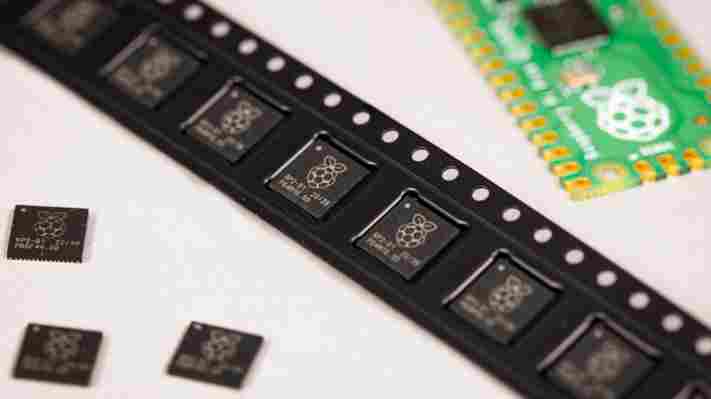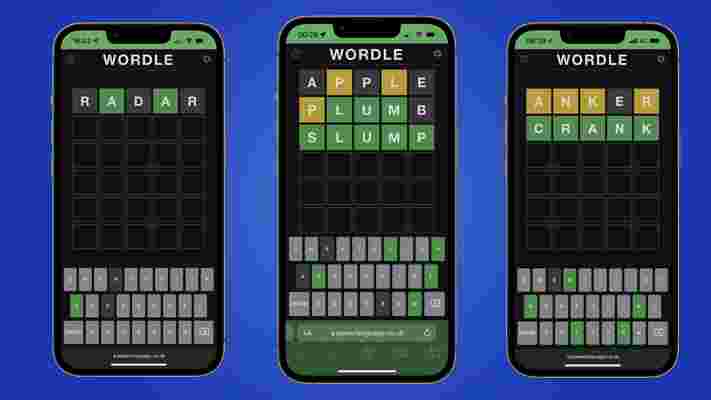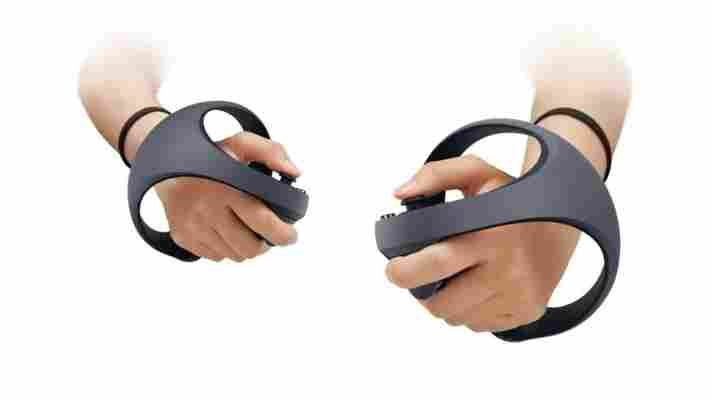Raspberry Pi has launched a new storefront called Raspberry Pi Direct that will allow customers to purchase products directly for the first time, instead of through an approved reseller.
The store is designed for direct-to-business sales only, so consumers hoping to purchase a Pi here or there will be disappointed. However, Raspberry Pi Direct could be a blessing for anyone willing to buy in bulk.
Currently, there are just two listings on the new online store : the RP2040 microcontroller in reels of either 500 or 3,400. The latter bundle costs $2,380, which makes for a per unit price of just $0.70.

Raspberry Pi RP2040
The first product powered by the RP2040 microcontroller was the Raspberry Pi Pico, which launched in January last year . Since then, the company has sold 1.5 million units, which have been used to power all manner of electronics projects and prototypes. Although the Pico can’t run a full operating system, it can be easily programmed to control sensors, motors and other peripherals.
Since the summer, the RP2040 has been available on its own from the network of approved Raspberry Pi resellers for a price of $1 per unit. The organization says this remains the appropriate avenue for hobbyists that want to get hold of the chip for prototyping, and even “for small- to medium scale production”.
However, the new scheme offers businesses a way to purchase the microcontroller in bulk at a discount of almost 30%, at a time when many other similar chips are disappearing from the market as a result of the global semiconductor shortage.
According to a blog post from Eben Upton, Raspberry Pi CEO, the company has been able to stockpile large quantities of the RP2040 microcontroller despite the shortage, thanks in large part to its space-efficient design.
“RP2040 is built on a more modern semiconductor process (TSMC 40LP) than most other microcontrollers. As a result, it makes extremely efficient use of scarce silicon wafer supply: each die occupies just 2mm^2, and each 300mm wafer yields roughly 21,000 dice,” he wrote.
“We have sufficient wafer stock on hand to produce 20 million chips, with more on the way. If you want to build your product on a microcontroller you can actually buy in 2022, RP2040 is your friend.”
Asked by TechRadar Pro whether it intends to sell other items in bulk via Raspberry Pi Direct, a Raspberry Pi spokesperson said the company does not "currently have plans to make products other than RP2040 available".
Wordle hard mode adds an extra layer of challenge – here's how to turn it on
Wordle is the word-a-day game taking the internet by storm. The popular word game presents a daily challenge in which you must guess a five-letter word in six guesses or fewer.
Wordle will then keep track of your stats, including win rate percentage, and a breakdown of the number of tries it takes you to reach the correct Wordle answer each day.
While Wordle's strict rules already make the game quite challenging, there's actually a secondary mode tucked away in the options menu – for those wanting an even greater challenge. It doesn't change up the words you'll be guessing in any way, but it does impose further restrictions that could make your Wordle experience that much tougher.
Under normal rules, Wordle will notify you of letters you've guessed correctly. A green tile indicates you've got the right letter in the right place, while a yellow tile tells you that letter is in the word, albeit in a different spot. Meanwhile, a greyed out tile tells the player that letter isn't in the word at all.
That's also the case on hard mode, but there's one big difference. With hard mode, you're forced into using all the yellow tiled letters you've accrued so far. So for example, if you've guessed the word to be "CHIMP" and "I" and "M" flag as yellow, you'll be required to use those letters in your next guess.
To many of you, this may not seem like much of a restriction. After all, using the correct letters gives you a better chance of guessing the word, right? Well, yes and no. The more yellow letters you have in your guess, the fewer new letters you'll be able to play with on subsequent guesses, and this can be especially strict when you consider you only have six guesses to begin with.

How to access Wordle hard mode
Activating hard mode on Wordle is simple enough, and just requires you to head into the site's settings menu. You can do so by tapping or clicking the cog icon in the top right of the screen. It's just right of the title, and next to the option to view your overall statistics.
Once you're in the settings menu, the very first option, "Hard Mode," is what you're after. By turning that on, you'll now be required to use all correct letters you've uncovered in subsequent guesses.
The settings menu also contains options for a dark theme and a color blind mode for those who may need it. The former might be a good option to reduce eye strain if you tend to spend a lot of time thinking about each guess.
And that's it! With hard mode activated, you can back out of the settings menu and experience your daily Wordle challenge with added restrictions. Do note that there doesn't seem to be any added benefit to playing on hard mode, and it can be turned off at any time by simply re-entering the settings menu and tapping the option once again, reverting Wordle to its default rules.
Please PSVR 2, don’t shake my head
Sony’s next-generation virtual reality headset, the PlayStation VR 2 , has had the covers lifted off its official spec sheet during the CES 2022 tech show. And while the majority of its feature list sounds incredibly exciting, one new addition could be turning heads for all the wrong reasons – quite literally, in fact.
While Sony has still yet to reveal what the headset itself will look like, it did offer a glimpse at what’s going on inside. PSVR 2 will offer an OLED display featuring 4K HDR visuals with a 110-degree field of view, capable of running at either 90Hz or 120Hz as games and software demand. Inside-out motion tracking of a player will remove the need for an external, separate camera system during setup and when playing, and a single USB-C connection will connect the headset to the console. Built-in eye-tracking and foveated rendering will also combine to make sure whatever you’re looking at is shown in the sharpest possible detail at all times without wasting precious system resources. Sony also gave a name to its Oculus-like motion controllers, calling them Sense controllers.

But perhaps the most intriguing addition to PlayStation VR 2 is its ‘new sensory features’.
“Headset feedback is a new sensory feature that amplifies the sensations of in-game actions from the player,” reads Sony’s introduction to the new features.
“It’s created by a single built-in motor with vibrations that add an intelligent tactile element, bringing players closer to the gameplay experience. For example, gamers can feel a character’s elevated pulse during tense moments, the rush of objects passing close to the character’s head, or the thrust of a vehicle as the character speeds forward. Additionally, PS5’s Tempest 3D AudioTech makes sounds in the player’s surroundings come alive, adding to this new level of immersion.”
On the surface, this sounds great. Why wouldn’t we want to feel more immersed in the action when playing PSVR 2 games?
Shaken, not stirred
However, anyone that’s used virtual reality headsets previously will likely be raising eyebrows at the feature. Unlike ‘traditional’ on-your-TV gaming, virtual reality takes some getting used to. It’s a bit of a learning curve for your body, as the fact that what your eyes are seeing doesn’t necessarily match up with what your body is feeling can lead to motion sickness and nausea.
Visual fidelity and tracking improvements, especially around latency, have helped to alleviate the discomfort when playing with VR devices, but it hasn’t eliminated it entirely, as human physiology is so unique to the individual.
But one thing that certainly isn’t going to help is vibrating a player’s head. Certainly, when we’re engaged in strenuous activities in the real world, whether we’re on a roller coaster or in an actual war zone, we’re exposed to rumbles and vibrations. Our sensory involvement in the real world helps to ground us in it, making it easier for us to make decisions on how to interact with the world around us based on the signals our body is sending us.
But our brains are smart, and not easily fooled. You can tell the brain it’s on a spaceship by playing a space-bound VR video – but if the sense of high-speed movement isn’t being felt by the other senses of your body, your brain will reject the scene, believe something is wrong, and trigger the sickness feelings.
You would assume, then, that an extra-sensory element to VR, like vibrational feedback, could help the situation, and further the brain's belief that it’s truly living what it is seeing with the eyes. But unless the vibrations are perfectly synced to the scene in a way the brain expects, it could result in another element that will confuse the senses, and make those feelings of sickness intensify. Just the thought alone of vibrating your head sounds uncomfortable, without the sometimes-claustrophobic nature of being inside a VR headset multiplying it. You’d assume the feature will be optional and toggle-able, but by making it a leading point of Sony’s reveal, you’d imagine it’s going to be an integral part of the headset’s future.

Haptic tactics
Credit where credit is due, Sony has made great strides in haptic feedback features during this console generation with the PlayStation 5’s DualSense controllers. Often subtle, but never poorly implemented, the controllers give a great sense of added tactile interaction with a game world. While a slight tickle of the palms will never truly emulate the wetness of an in-game rainstorm, it does help to ground the senses in a digital place. Similarly, the company’s Tempest 3D audio tech is perfectly suited to giving a sonic sense of place in VR. The Sense VR controllers will certainly benefit from the delicate degrees of touch feedback that will help immerse a player looking to physically interact with a digital world. But can a similar degree of nuance be achieved when trying to translate that feature into an interaction with your head? We’re not so sure.
VR is at a tipping point. Millions of Oculus Quest 2 headsets have now shipped, Facebook / Meta is pushing its metaverse , and there are millions of existing PSVR owners waiting to see what the next evolution in the format will be. But VR experiences need to be accommodating and welcoming to first time users if not to turn them away from the outset – and any vibrating headset will need to buzz carefully to ensure players are comfortable long term.
For the time being, we’re waiting to be convinced. Sony better have a great implementation, or run the risk of adding an additional nauseating factor into the mix. Rumble my hands all you want, but not my brain, Sony. Please.